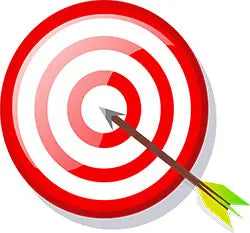Typically a 3D Pedometer will provide the most accurate results but there are some other considerations to be aware of.
First off, a 3D pedometer simply means movement is measured in multiple directions and the Pedometer doesn't need to be vertically oriented to detect movement like the previous 2D Pedometers did.
When looking for accuracy, you will want a Pedometer that includes some sort of False Start monitor; whether that be a timed delay or whether a certain number of steps need to be taken before it starts to capture data. These are put in place to make sure you are actually walking and not simply shifting in your chair, swinging your wrist or riding in a bumpy car. Without these counter measures, pedometers will generally record a lot of steps that weren't actually taken (typically referred to as phantom steps), providing you inaccurate readings.
While the counter measures for detecting steps are great to ensure the number of steps counted are as accurate as they can be, they can be frustrating for some. For example, if you are interested in tracking every step you take during the day, these more accurate pedometers will prove to be frustrating for you. As they won't likely record your trips from the kitchen to the living room. Likewise, if you have a job with a lot of stops; like a waiter or waitress it won't track all of the steps you take during your shift.
If you can live with it, an accurate pedometer will provide you the best experience when it comes to tracking your activity.
Here is one point of view on tracking steps. Let's say your goal is to lose weight or get in better shape. We can likely assume that you haven't met your goal so you have purchased a pedometer to help you achieve it. We can also assume that you are already walking around your home or workplace. So tracking the steps you are already taking isn't going to get you any closer to your goals.
Therefore, trying to add extra steps into your daily routine is the only thing that is going to help you achieve your goals. In this scenario, having the most accurate count is likely going to provide you with the most realistic view of where you are in relation to achieving your daily goals.
Check out this handy calculator to see how long it will take to realize your weight loss goals.
I would typically recommend walking around with your new Pedometer for a day or two. Then using that step count as your benchmark to set your goals from. Let's say you counted 2,000 steps on average. I would aim to add 30%, so increase it to 2,600 steps the following two day. Then add another 30% bringing it to 3,380 steps 2 days after that.
Adding steps isn't too difficult. Remember, you don't need to take them all in a row. You can take a couple of 15 minute walks to add a lot of extra steps in your day.
For your goals, you can track steps, distance, activity time and speed. The top rated SC2 Pedometer will allow you to track all of these.

